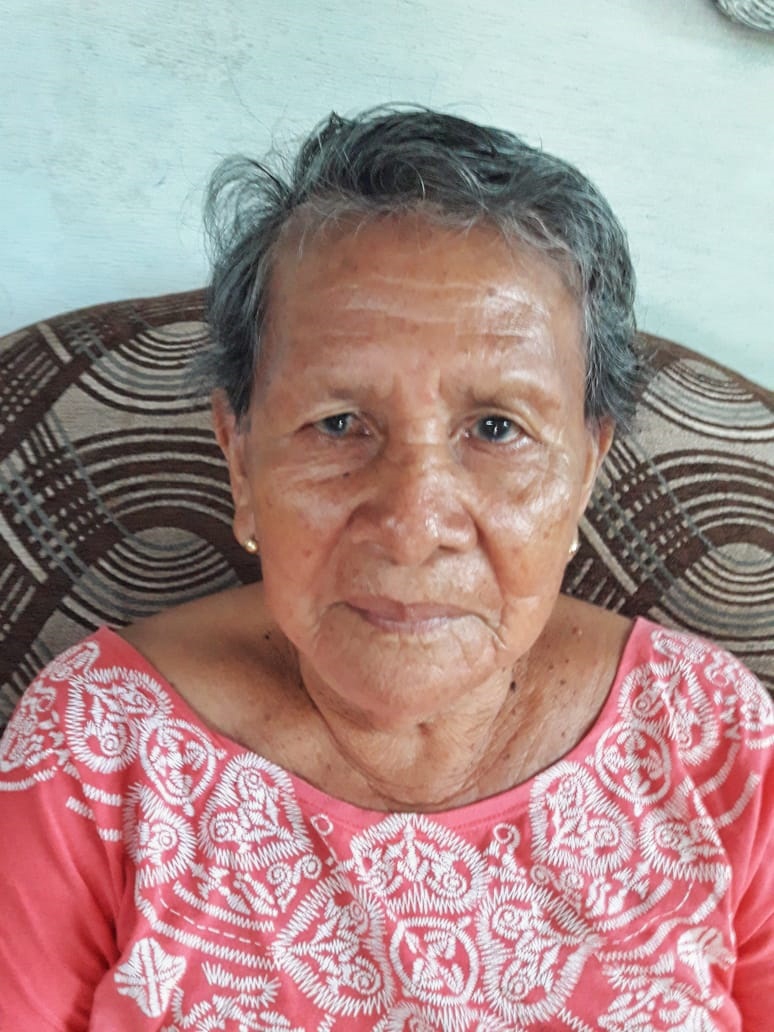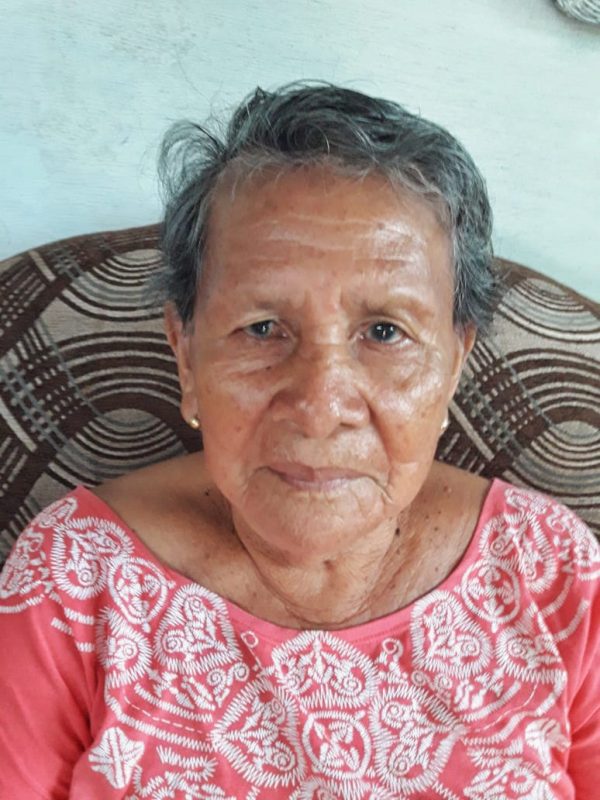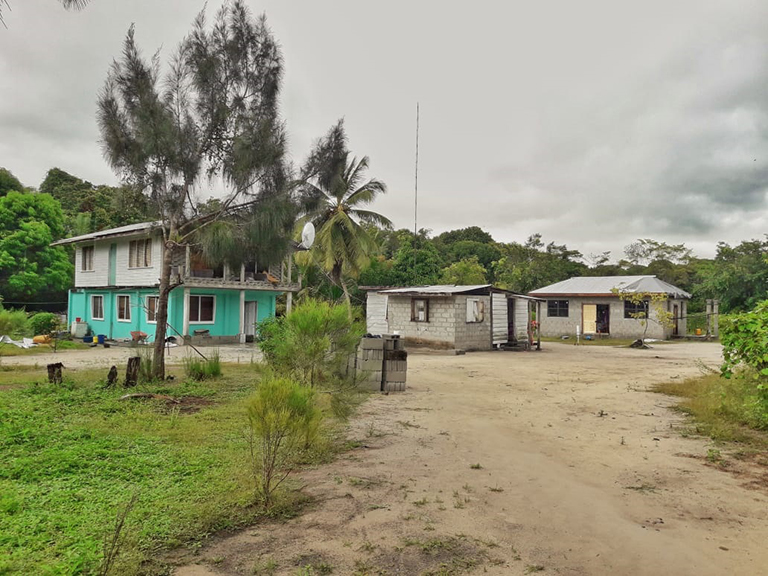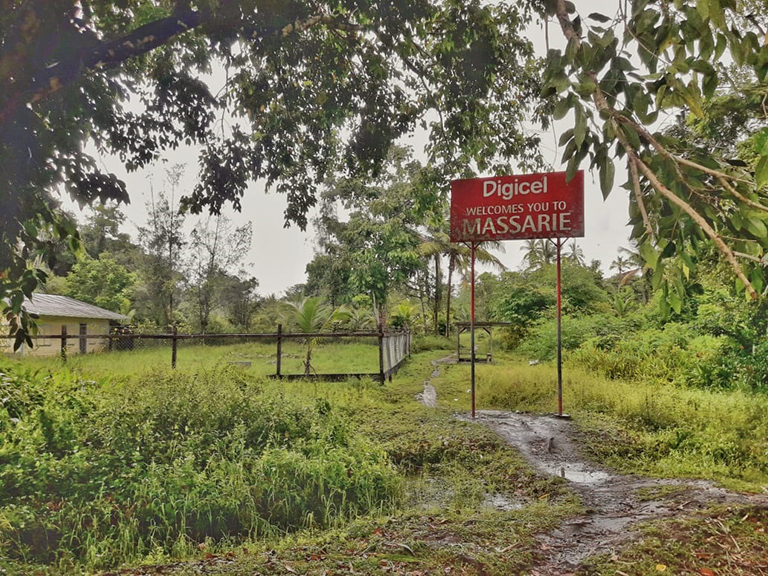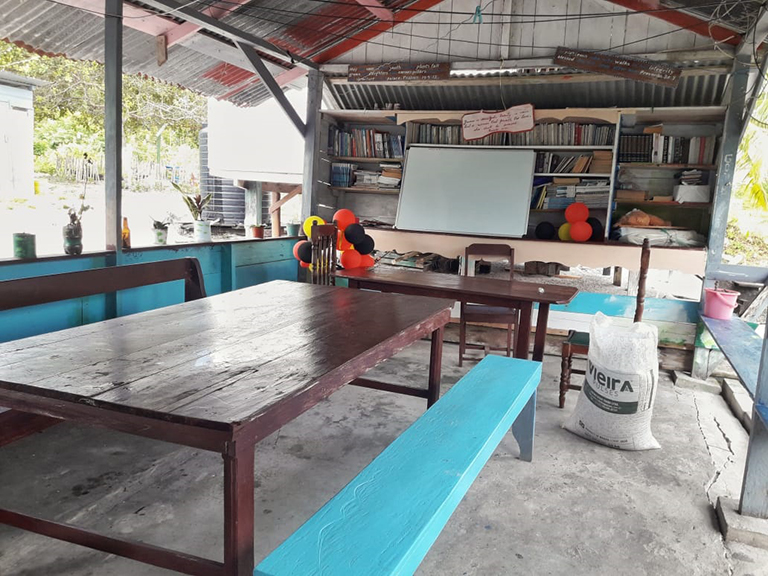Captain David Emanuel pulled his boat up at St Lucian’s Mission even as the rain poured. The island mission, though considered the central point of Wakapoa, has only an average of 50 residents.
Emanuel was born at St Lucian Mission and grew up at Kamadankoro settlement, where he still lives today. He returned to St Lucian Mission as a boy for school.
After he attained the age of majority, Emanuel ventured to Bartica and began working as a porter on a tractor bringing logs out of the forest. He also worked at Mahdia driving a tractor then left to work in the mines there. Following his return, he met the woman he eventually married right in Wakapoa.
The boat captain is also a tour guide who takes visitors to Wakapoa, Akiwini, Moruca and other places along the Pomeroon. It was through his many tours that he discovered a little known settlement of several families at a place called Bat Creek. However, with the tourism industry being hit the hardest in the economy due to the COVID-19 pandemic, this has come to a stop. Emanuel had been working on a privately owned farm in Akiwini for the last seven years, a job he has had to rely on more recently owing to the pandemic.
Turning to the Heritage Day event, Emanuel explained that it serves as a time to bring in an income and people would make their crafts, food, and drinks to be sold on the big day.
Wakapoa is currently establishing a guest house where visitors can stay. The best time to travel is on Monday which is Market Day as transportation is cheaper and easier to come by.
The midwife
Following Emanuel through a track running behind the schools and alongside a cemetery where jamoons stained the ground purple, we arrived at several houses in a yard. Construction was being done on a new house. Mary Richards lives in one of the houses.
“I am from Moruca in Region One and I came here to the mission to work as a midwife when I was 29 years old. I came here in 1960, the 12th of January,” the 81-year-old woman recalled. She retired on August 21, 1999. During her 39 years as a midwife, she delivered more than 1,000 babies in Wakapoa.
In Moruca where she grew up, her mother, though she was never trained as a midwife, delivered many babies during her lifetime. Back in those days, women who were not trained in midwifery but delivered babies were called nannies. Her mother lived until the ripe old age of 99.
Richards was one of several women selected to study midwifery in Georgetown for two years after which they were to return to their rural hometowns. However, following her examination, she was sent to Wakapoa.
“When I came here, it hadn’t a health centre,” Richards said. “There was a little hut I had to stay in, and I had to go to the different areas to deliver babies whenever I was called, at any hour of the night. I also did a bit of first aid and took care of patients with cuts, as well as run clinics such as the prenatal, infant, and children. For people with diabetes, they went to Charity. We did testing for sugar. Then, we didn’t do any testing for malaria, they had to go to Charity for that. After I retired, they began doing tests here for malaria.”
The raging thunderstorm overhead forced me to lean forward to catch every word she said.
Reminiscing, Richards shared that there were rainy nights when husbands would turn up for her with canoes as their wives had gone into labour. She said that sometimes by the end of the harrowing journey, she arrived to find that the mother had already given birth.
In the early years of her service at Wakapoa, she recalled, there was no one else who took care of the people. Today, a health centre stands on St Lucian’s Mission. There are also two more health centres in two other settlements in Wakapoa.
Speaking about COVID, Richards said she has never seen or heard any plague of the sort until now. “I am very worried about the virus. Even right now I don’t want to go on the [Essequibo] Coast though I have some money in the bank to collect and my NIS pension to collect. I’m afraid to go,” she said.
Asked if it was in Wakapoa that she met her husband, Richards chuckled acknowledging that it was. Their union produced nine children. Hyacinth Richards is one of her children.
Hyacinth lives in a house in the same yard as her mother. She was born in Moruca but spent almost all of her life in St Lucian’s Mission. She is currently the acting head teacher of Wakapoa Primary School. Aside from the schools on the mission, there are two others. Wakapoa has three primary and one secondary schools. Each primary school has a nursery department.
“The place had no shop back in the early days. Growing up as a child you had to go off of the island to do shopping, to get your groceries. We would have to go across to [Massarie] to buy groceries. The closest shop from this settlement was approximately a mile away. We had to paddle to get there,” Hyacinth said. The journey, she added, was half an hour away. If anyone forgot to get an item, or to save having to go to the shop, residents would ask one of the schoolchildren from the settlement where the shop is located to bring that grocery item the next day when they returned to school.
‘Little to no help at all’
As regards education in Wakapoa during the pandemic, the head teacher said that worksheets are printed out and distributed to the children. This is rather challenging, she said, as they do not always have ink or electricity when needed. As a result, teachers would sometimes use the basic textbooks to give the children work to do. Textbooks have been distributed to some of the children. The school has 123 pupils but since some of them already have textbooks, only 50 require printed worksheets. Materials are printed once a week for daily work on the four core subjects. She said she believes Wakapoa Secondary School uses the same teaching system as well.
“It is very difficult because some parents don’t know how to read and write. They don’t know how to handle the topics to get it over to the children, so the children are getting little or no help at all. Some children would return their work to the teachers living close by to be marked,” she said.
Hyacinth also shared that living in Wakapoa is peaceful; there is much to enjoy when it comes to the environment as well as an abundance of yard space. Apart from the people of Wakapoa belonging to the Lokono and Warrau tribes, Hyacinth said they are religious and belong to various denominations of Christianity. There are no known Hindus or Muslims.
